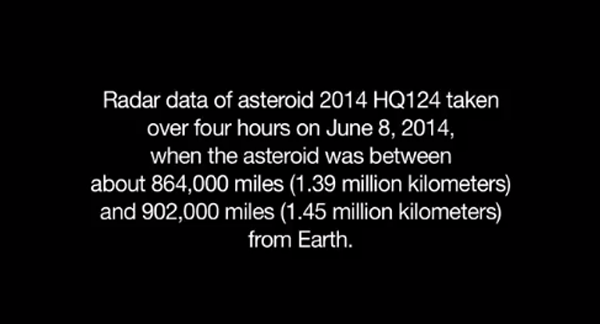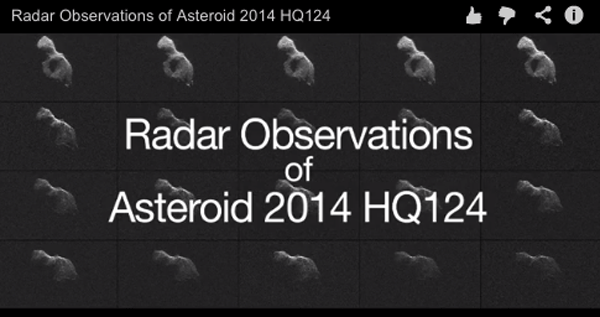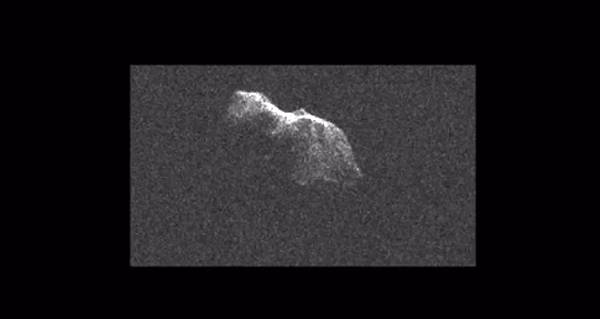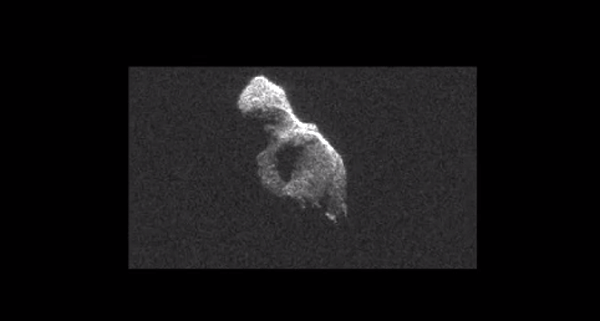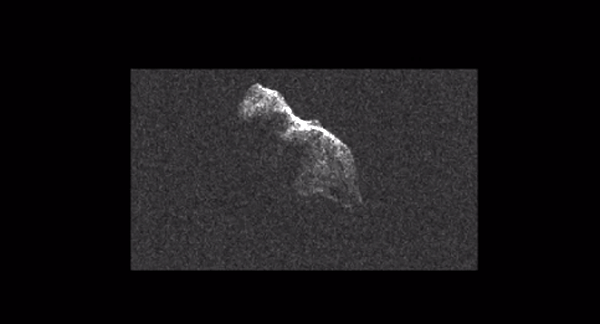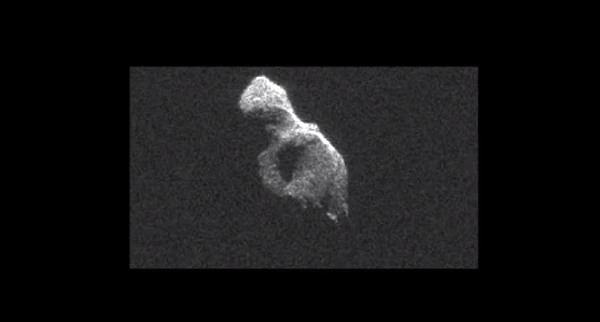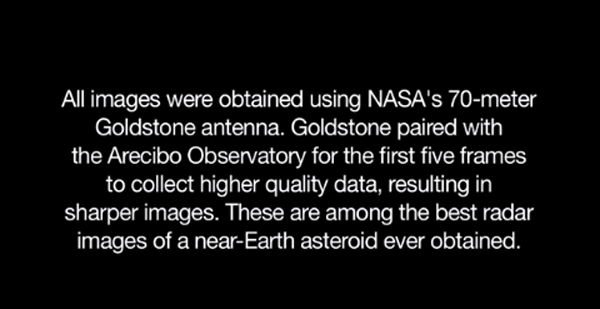.
2,06.2014
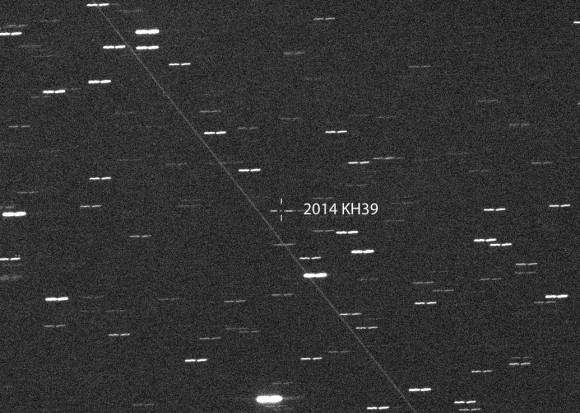
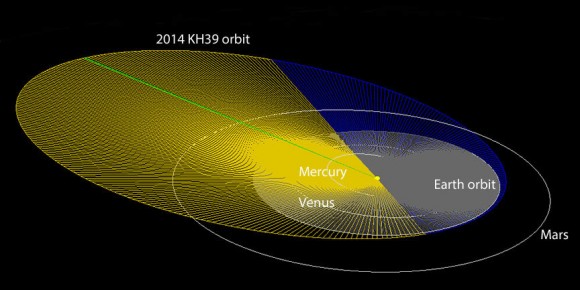
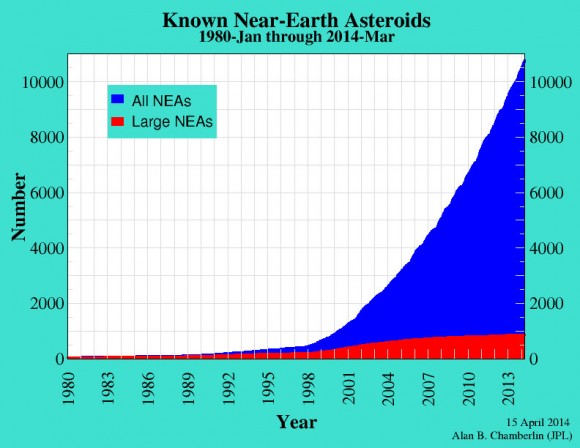
Riesenasteroid beinahe übersehen: „The Beast“ nähert sich der Erde
Big 'Beast' Asteroid Flies by Earth Sunday: What Would Happen if It Hit Us?
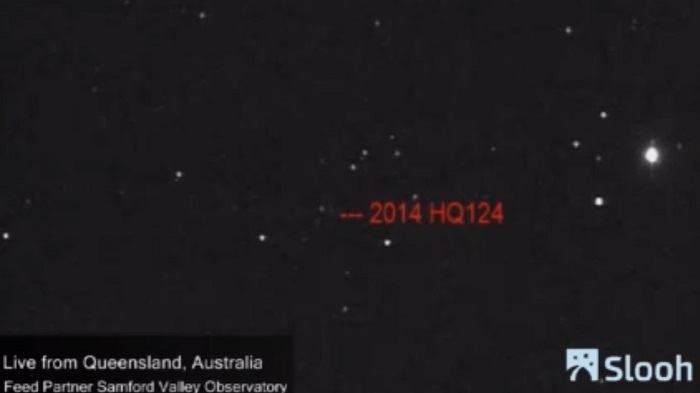
The near-Earth asteroid 2014 HQ124 is seen via telescope from Australia in this June 5, 2014 photo captured by the online Slooh community observatory. The asteroid will fly by Earth, outside the orbit of the moon, on June 8.
.
Humanity should be thankful "The Beast" doesn't have Earth in its crosshairs.
This Sunday (June 8), the near-Earth asteroid 2014 HQ124 — which some observers have nicknamed "The Beast" — will give the planet a relatively close shave, coming within 777,000 miles (1.25 million kilometers) at its closest approach, or about 3.25 times the distance from Earth to the moon.
"This one would definitely be catastrophic if it hit the Earth," asteroid impact expert Mark Boslough, of Sandia National Laboratories in New Mexico, said Thursday (June 5) during a webcast produced by the online Slooh community observatory that previewed 2014 HQ124's upcoming flyby.
"If it hit a city, it would definitely wipe out an entire metropolitan area," Boslough added.
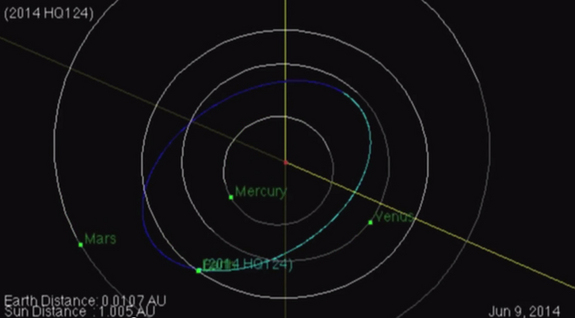
The orbit of near-Earth asteroid 2014 HQ124, first discovered on April 23, 2014, is shown in this NASA graphic. The asteroid will fly by Earth Sunday, June 8, at a safe distance of three times the Earth-moon distance.
.
"If it hit a city, it would definitely wipe out an entire metropolitan area," Boslough added.
Credit: NASA/JPL-Caltech
Asteroid 2014 HQ124 is currently traveling about 31,000 mph (50,000 km/h) relative to Earth, Boslough said. But if the asteroid were on a collision course, our planet's gravity would boost its speed up to about 40,000 mph (64,000 km/h) at the time of impact.
If 2014 HQ124 is one solid piece of rock — its composition isn't known for certain — the strike would unleash an explosion with a yield of about 2,000 megatons, Boslough added. For comparison, the atomic bomb the United States dropped on the Japanese city of Hiroshima during World War II packed about 15 kilotons. (One megaton is equivalent to 1,000 kilotons.)
"You'd end up with a crater about 3 miles across," Boslough added. "An event like that would break windows over 100 kilometers away."
Asteroid 2014 HQ124 was discovered on April 23, just six weeks ago — not nearly enough time to deflect the asteroid if it were on a collision course with Earth. But that doesn't mean the asteroid would kill millions of people if it struck New York City or Tokyo.
"Once it's within radar distance, the precision is remarkably good on its position and speed," Boslough said. "So the folks at JPL [NASA's Jet Propulsion Laboratory] would be able to predict its impact point to within the nearest kilometer and its time to within the nearest second."
There would thus probably be plenty of time to organize an effective evacuation campaign if 2014 HQ124 were headed straight for us. But that isn't always always the case, as some (smaller) space rocks slam into the planet without ever being detected.
In February 2013, for example, a 65-foot-wide (20 m) asteroid detonated without warning in the sky above the Russian city of Chelyabinsk, shattering thousands of windows and injuring more than 1,200 people. And there are many more objects out there like the Chelyabinsk asteroid — small space rocks cruising unnamed through the dark depths of space.
'Beast' Asteroid Looks Like a Beauty in Radar Images
